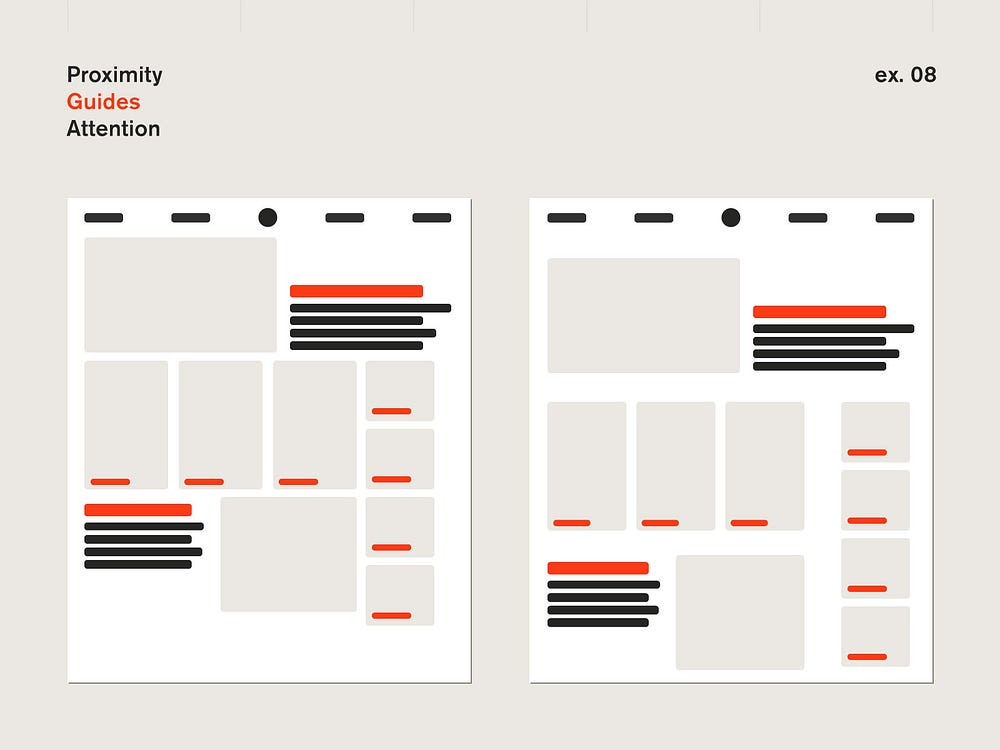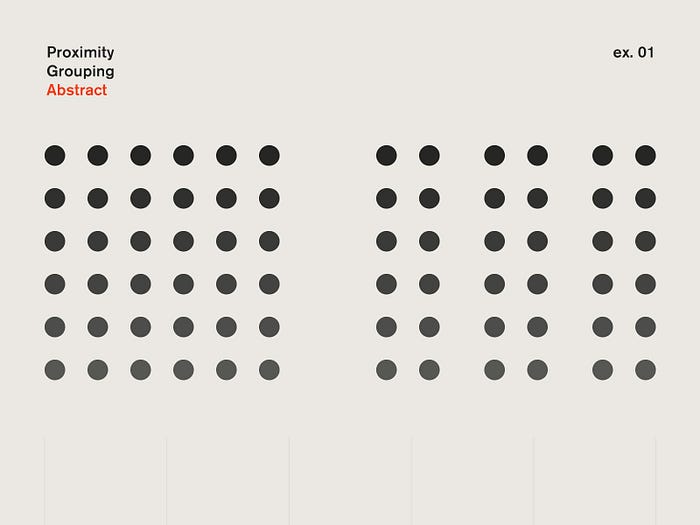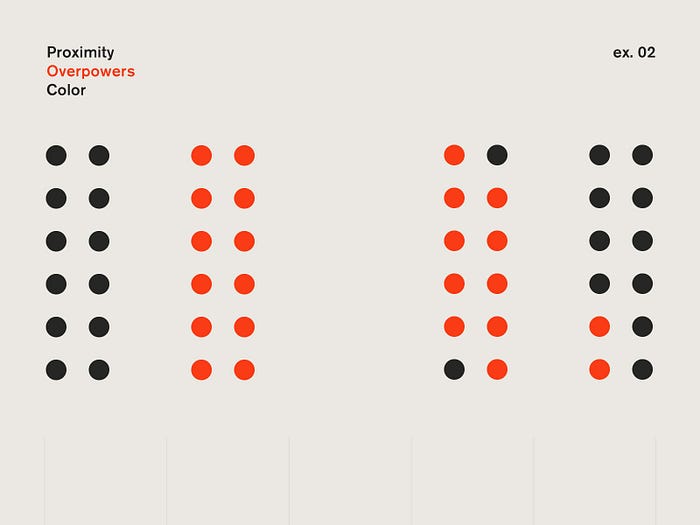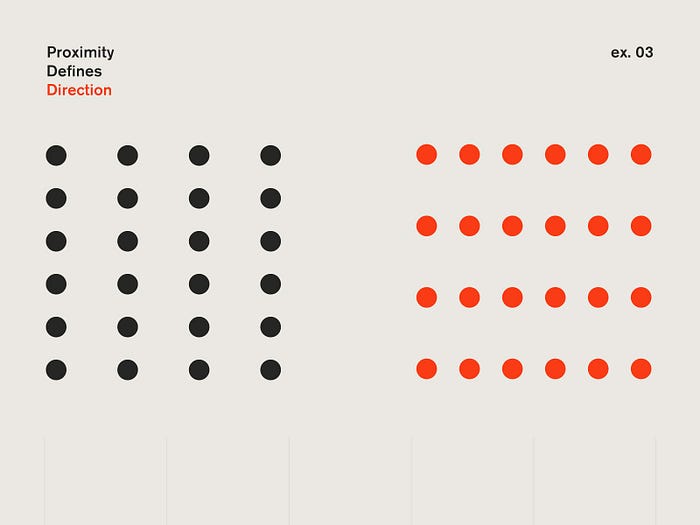Member-only story
The gestalt principle of proximity — in action

According to gestalt psychology, we need to organise what we see to make sense of the world. Without using patterns to order out vision, we would overwhelm our brain. The gestalt psychologists formalised those patterns as the gestalt principles.
The gestalt principles (of grouping) are part of the most important design theories. Organising information means understanding. A designer’s task is to make content as easy to understand as possible. Proximity is one of the most common principles. In the following I will provide some examples to show the importance of this principle.
What is the principle of proximity?
The principle of proximity states that we perceive objects which are close to one another as a group. This is true even if the color, size or shape of the objects differ. The following example illustrates the principle of proximity. In the first image you see one group of circles. In the second image you see 3 groups (columns) of circles. The only thing that changed is the distance (proximity) between some of the circles.

The principle of proximity is stronger than other gestalt principles. You can see below that the circles still appear grouped, even when they differ in shape or color. Thus proximity is stronger than for example the principle of similarity.

Proximity can help you define the direction of the viewers’ attention. Below you see either rows or columns, depending on the proximity of the elements.


